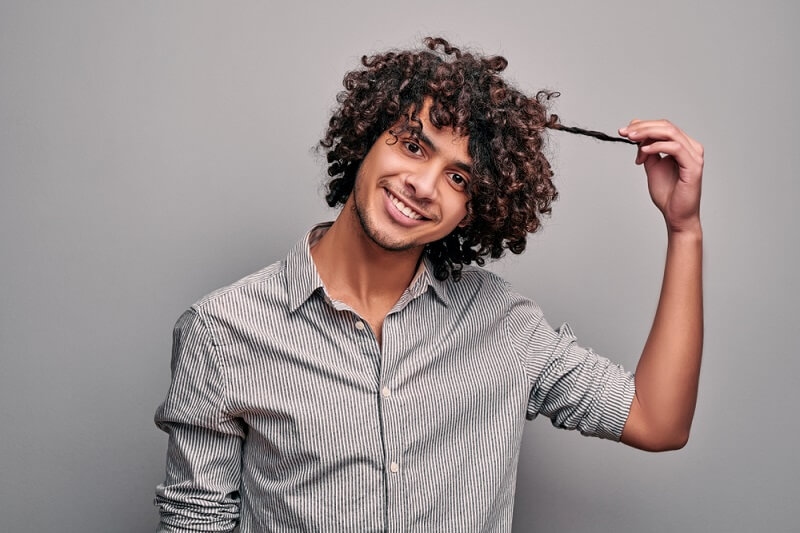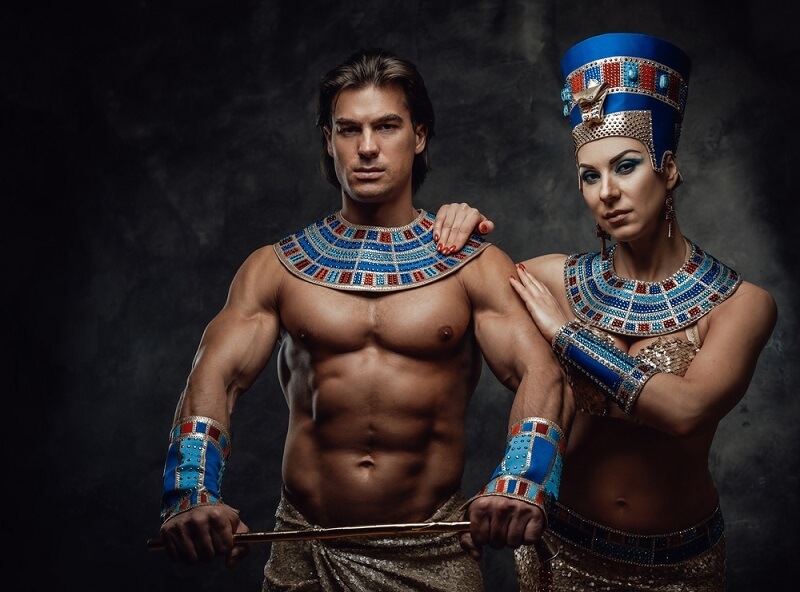
Egyptian culture is renowned for its sophistication, artistic grandeur, and distinctive fashion sense, including its approach to grooming and hairstyling. Egyptian hairstyles for men were more than just a matter of personal preference; they were deeply symbolic, representing social status, religious beliefs, and even political affiliation. The evolution of Ancient Egyptian male hairstyles reflects the shifting trends of each historical period while maintaining a remarkable consistency in cultural identity. This article explores the fascinating journey of traditional Egyptian men's hair, examining key trends and their significance throughout ancient history.
In ancient Egypt men used to shave their heads during the Early Dynastic and Old Kingdom periods, both for reasons of hygiene as a remedy against lice and due to the intense heat of the Egyptian summer. Baldness symbolized cleanliness for many, who regarded the ease of maintaining cleanliness with a shaved head as a hygienic inclination.
On the other hand, rich Egyptian men would wear wigs to formal occasions, usually made out of human hair, wool, or palm fiber, and ornamented with metallic threads or beads, denoting their elite status. The wigs came in bob styles, thoughtfully constructed into layers, with straight strands that fell to the shoulders.
Certain men, especially the laborers and the working classes, favored cropped short or, in some cases, close-shaven hairstyles for comfort while working under hot sunlight. This basic hair choice served their interests - an adrenaline rush where the use of muscles became the only option. Furthermore, the use of scented oils to keep their bald heads moisturized while protecting them against the heat of the Egyptian sun was quite common among those men.
With the Middle Kingdom, there was a change in Egyptian men's hair trends. Wigs became much more complicated; shoulder-length curls were the customary hairdressing of an Egyptian man. Strands of finely braided human hair became a fashion for nobles and priests. They represented power, wisdom, and divine connection.
Royal men usually came wearing wigs that were rather long and thick, often with gold or jewels as adornments. One of the most famous examples of this is the Khepresh headdress, a blue war crown worn by Pharaohs and symbolizing their military prowess and divine kingship.
Hair accessories then became a component of the male grooming regimen. Beaded headbands, golden diadems, and perfumed cones were the ornaments used for personal enhancement and social marking. The use of perfumed cones, made from fat and flavorful oils, was particularly common among the elite. These cones were placed on the top of the wig and slowly melted throughout the day- making the air waft with an agreeable odor.
This period saw the New Kingdom reach an apex in artistic and cultural expression, expressing their satirical bent in hair-styling. Ancient Egyptian male hairstyles in this period became even more stylish. Long, curly wigs made from human hair transformed into signatory of aristocracy while there flourished elaborate braiding and plaiting techniques.
Although almost all upper classes-in particular priests and officials-shaved their heads, they sometimes wore a ceremonial wig. These wigs were highly styled into curls, tight curls, braids, and ringlets that made it appear as though it was very stately and geometric.
Of all the hairstyles sported by men in ancient Egypt during the period, perhaps the most recognizable Egyptian men's hair trends was the Nemes, the striped cloth headdress that was worn by Pharaohs such as Tutankhamun and Ramesses II while complemented by a false beard-another form of divine authority and masculinity.
Common citizens and junior officials sported relatively shorter wigs or wore the natural hair of easy styles that could not require much maintaining. Young boys had a particular youth side-lock, whereby most of the head was shaved except for one braid, with the liberty to keep it on one side, signifying childhood and the passage to adulthood.
The peak of excellence reached during this time in wig craftsmanship, where beeswax and resin had been used by artisans in holding intricate styles in place. Some wigs were dyed black or dark brown for aesthetics, while others used gold threads and semi-precious stones for luxury.

With the influx of guards by foreign elements, especially from the Greeks and subsequently the Romans, Egyptian hairstyles male began witnessing some changes. Many Egyptian men adopted Greek and Hellenistic hairstyles which had hair cut short and then wavy, or shoulder-length and naturally textured. The highly elaborate wigs of the earlier periods slowly faded away, and more natural hairstyles gained favor.
However, some of the traditions have remained, especially by priests and older generations who continue to shave their heads or wear ceremonial wigs while conducting religious rites. The mixture of Egyptian and Hellenistic styles created a unique blend of ancient customs into new foreign patterns.
Hair was a vital sign regarding status in Ancient Egypt, and different classes had different grooming practices.
Care of hair plays an important part in the entire regimen of grooming an Egyptian, who made use of varied natural cosmetics for having beautiful healthy hair. Egyptians applied castor oil, nut oil, beeswax, etc., for wining and conditioning wigs, as well as their natural hair. Henna, a dye that produced a reddish-brown tint, was generally used to color hair.
Males in Ancient Egypt could trim their hair, style it, or even shave by barbers at ancient hair salons. Tomb paintings and carvings depict these men undergoing a haircut to show how important grooming was in their daily lives.
The influence of Ancient Egyptian male hairstyles extends beyond historical records and can still be seen in modern interpretations. From costume designs in Hollywood movies to contemporary fashion statements, elements of Egyptian hairstyles for men continue to inspire stylists and designers today.
Moreover, modern Egyptian culture retains some remnants of ancient grooming traditions, particularly in the meticulous care for hair and the use of oils and herbal treatments to maintain hair health. Though the traditional Egyptian men's hair styling techniques have evolved, their impact on global fashion remains undeniable.
Throughout ancient history, Egyptian hairstyles for men were deeply intertwined with societal norms, religious beliefs, and personal identity. From the clean-shaven heads of the Old Kingdom to the elaborate wigs of the New Kingdom, Egyptian men's hair trends were a reflection of status, culture, and innovation. As time passed and foreign influences arrived, these styles adapted, yet their essence remained a vital part of Egypt’s rich heritage. Today, the legacy of Egyptian hairstyles male fashion lives on, serving as a testament to the sophistication and cultural pride of one of the world’s greatest civilizations.
The story of Egyptian men's hairstyles is not just about fashion—it is a narrative of power, identity, and adaptation. Whether through the grandeur of intricately designed wigs or the simplicity of a shaved head, the hairstyles of Ancient Egypt remain one of the most visually compelling aspects of its civilization.
This content was created by AI